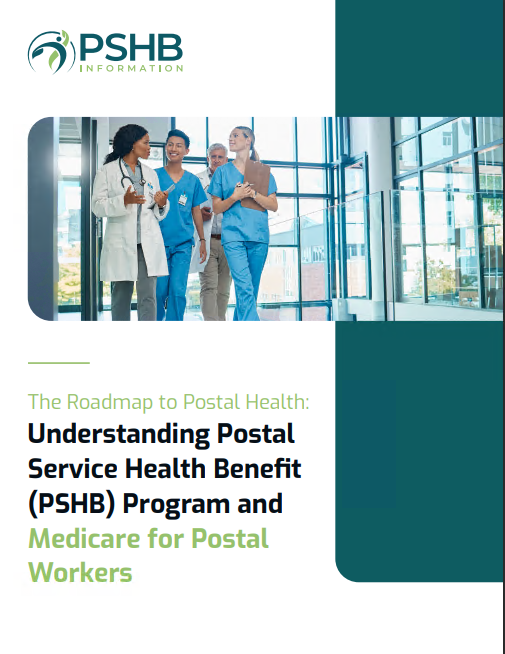Key Takeaways
-
Medicare Part C, also known as Medicare Advantage, offers additional benefits beyond Original Medicare, but coverage details can vary significantly between plans.
-
As a PSHB member, understanding network restrictions, cost-sharing, and Medicare integration can help you make informed decisions about your healthcare coverage.
Understanding Medicare Part C and How It Fits Into PSHB Coverage
Medicare Part C, or Medicare Advantage, is an alternative way to receive Medicare benefits. Instead of using Original Medicare (Part A and Part B), you get coverage through a private insurance plan approved by Medicare. If you’re a member of the Postal Service Health Benefits (PSHB) program, choosing Medicare Part C requires a careful look at how it aligns with your current benefits, costs, and healthcare needs.
PSHB members eligible for Medicare may wonder if Medicare Advantage is the right choice. While these plans often bundle extra benefits like vision, dental, and hearing coverage, they also come with network restrictions, cost-sharing structures, and different rules for accessing care. Here’s what you should consider before making a decision.
1. How Medicare Part C Works for PSHB Members
Medicare Advantage plans must cover everything included in Medicare Part A (hospital insurance) and Part B (medical insurance), but they typically operate as managed care plans, such as Health Maintenance Organizations (HMOs) or Preferred Provider Organizations (PPOs). These plans may include prescription drug coverage (Part D), making them an all-in-one option for Medicare beneficiaries.
For PSHB retirees, Medicare Part C can serve as either a supplement or an alternative to PSHB coverage. If you enroll in a Medicare Advantage plan, your PSHB benefits may coordinate differently, depending on the specific plan details. Some plans reduce or eliminate certain out-of-pocket costs, while others have restrictions that could impact your ability to use your preferred healthcare providers.
2. Network Restrictions and Provider Access
One of the most significant differences between Original Medicare and Medicare Advantage is provider access. Medicare Advantage plans usually have provider networks, meaning you must use in-network doctors and hospitals to receive the lowest out-of-pocket costs. Some plans require referrals to see specialists, and out-of-network care can be costly or even unavailable unless it’s an emergency.
If you are accustomed to the nationwide provider access of PSHB coverage, switching to a Medicare Advantage plan could limit your choices. Always review whether your preferred healthcare providers participate in the plan’s network before enrolling. If you travel frequently or live in multiple locations throughout the year, an HMO plan may not be the best fit due to its local network limitations.
3. Cost Considerations: Premiums, Deductibles, and Copays
Medicare Advantage plans often have lower monthly premiums than PSHB plans, but this doesn’t always mean lower overall costs. These plans operate with cost-sharing mechanisms, including deductibles, copayments, and coinsurance.
-
Deductibles: Some Medicare Advantage plans have an annual deductible that must be met before coverage kicks in for certain services.
-
Copayments and Coinsurance: Most plans require fixed copays for doctor visits, specialist appointments, and hospital stays.
-
Out-of-Pocket Maximums: Medicare Advantage plans cap yearly out-of-pocket costs for covered services, which can provide financial protection against excessive medical bills.
For PSHB retirees, it’s important to compare these costs with your existing PSHB coverage to determine whether Medicare Advantage offers real savings. Keep in mind that out-of-pocket expenses can add up quickly if you require frequent medical care or specialized treatments.
4. Medicare Part C and Prescription Drug Coverage
Many Medicare Advantage plans include built-in prescription drug coverage (Medicare Part D), eliminating the need for a separate Part D plan. However, the formulary (list of covered drugs), pharmacy network, and cost-sharing requirements vary by plan.
PSHB retirees who need specific medications should check whether their prescriptions are covered under the Medicare Advantage plan’s formulary and at what cost. Some plans have tiered drug pricing, meaning your out-of-pocket expenses will depend on whether your medication falls into a lower or higher pricing tier.
If your PSHB plan already offers comprehensive drug coverage, switching to a Medicare Advantage plan with Part D might not be necessary. However, if you want the convenience of having all your healthcare and drug benefits bundled together, a Medicare Advantage plan could be a good option.
5. Medicare Integration and Coordination of Benefits
For PSHB members, Medicare integration plays a crucial role in determining coverage and costs. If you’re enrolled in both PSHB and Medicare, your benefits may coordinate to reduce out-of-pocket expenses.
-
Medicare as Primary Coverage: If you have both PSHB and Medicare, Medicare typically becomes your primary coverage, with PSHB acting as secondary coverage to fill in cost gaps.
-
Medicare Advantage Coordination: Some Medicare Advantage plans coordinate well with PSHB, offering additional cost-sharing reductions or premium reimbursements for enrollees who maintain both types of coverage.
-
Enrollment Requirements: PSHB retirees must enroll in Medicare Part B to keep their PSHB benefits, and certain PSHB plans may waive deductibles or offer enhanced benefits for those who choose Medicare Advantage.
Before switching to Medicare Advantage, confirm how your PSHB benefits will interact with the plan. This will help you avoid unexpected costs and ensure you’re getting the most value from your coverage.
Evaluating Whether Medicare Part C is Right for You
Choosing between Medicare Advantage and PSHB coverage requires careful evaluation of your healthcare needs, financial situation, and provider preferences. Here are a few key questions to ask yourself:
-
Do I prefer the flexibility of Original Medicare or the structure of a Medicare Advantage plan?
-
Are my preferred doctors, specialists, and hospitals in-network?
-
How do Medicare Advantage copays and deductibles compare to my current PSHB costs?
-
Will I benefit from the additional services offered by Medicare Advantage, such as vision and dental coverage?
-
Does the plan include prescription drug coverage, and does it cover my medications affordably?
By weighing these factors, you can make an informed decision about whether Medicare Part C aligns with your healthcare goals and financial priorities.
Find the Right Plan With Help From a Licensed Agent
If you’re unsure about your Medicare options under PSHB, speaking with a licensed agent listed on this website can provide clarity. A professional can guide you through plan comparisons, coverage details, and enrollment requirements, ensuring you choose a plan that best fits your healthcare needs.









